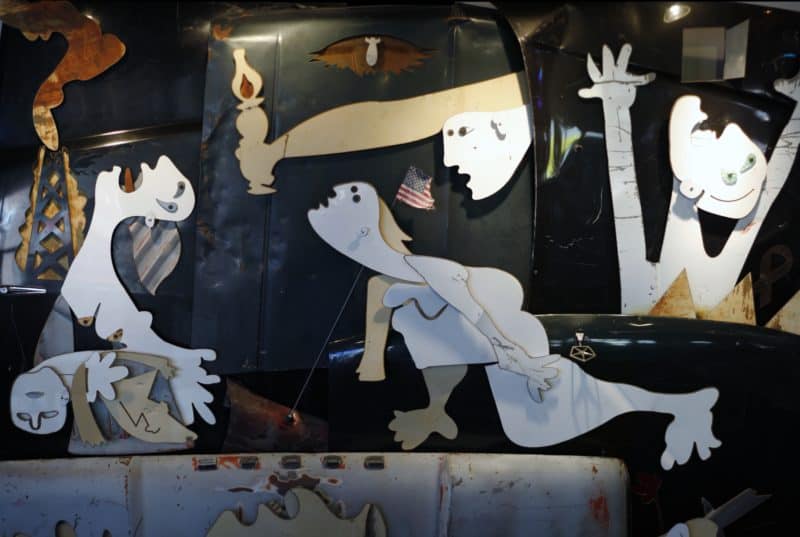Last week we asked our readers and contributors what are the obligations of a critic writing about a political work of art. This is one of several responses we will publish throughout the week. The debate started with a review and its follow up.
Jillian is right; Hammond is under no obligation here. The concept is hers, and there’s nothing worse than art by committee. By that I mean if some peace group had created Fallen, for example, there would not only have been reference to Iraqi dead, but also a variety of victimization or oppression somehow represented.
I do wish I’d seen the exhibit because I first wondered whether the deaths of Iraqis and Afghans had been mentioned at all in its presentation. But I also think the power of the artist’s concept—its simplicity, its use of American tropes (as Steinhauer mentioned)—might be complicated even by such mentions.
Still, I do find myself wondering about how many families of Iraq/Afghanistan soldiers and veterans came to the exhibit, and if their responses were recorded. Many that I know hold next to their grief for lost buddies a keen awareness of the toll exacted on Iraqis. I’m thinking of vets like Geoff Millard of Iraq Veterans Against War, who now works for the Veterans Administration but testified about some of that damage before Congress; of Fallujah vet Ross Caputi, who has since married the Iraqi-American physician Dahlia Wasfi; of the other Warrior Writers, many of whom are only now trying to touch that huge grief/guilt matrix. It’s probably both harder and easier to do so in the visual arts: that war’s Guernica is likely not yet in progress.
I doubt that any of them would have asked the artist to encompass more than she did. Maya Lin’s genius work was almost obscured by the later extra statues, and I don’t want to suggest that cluttering Fallen would have honored the Iraq/Afghan dead any better.

